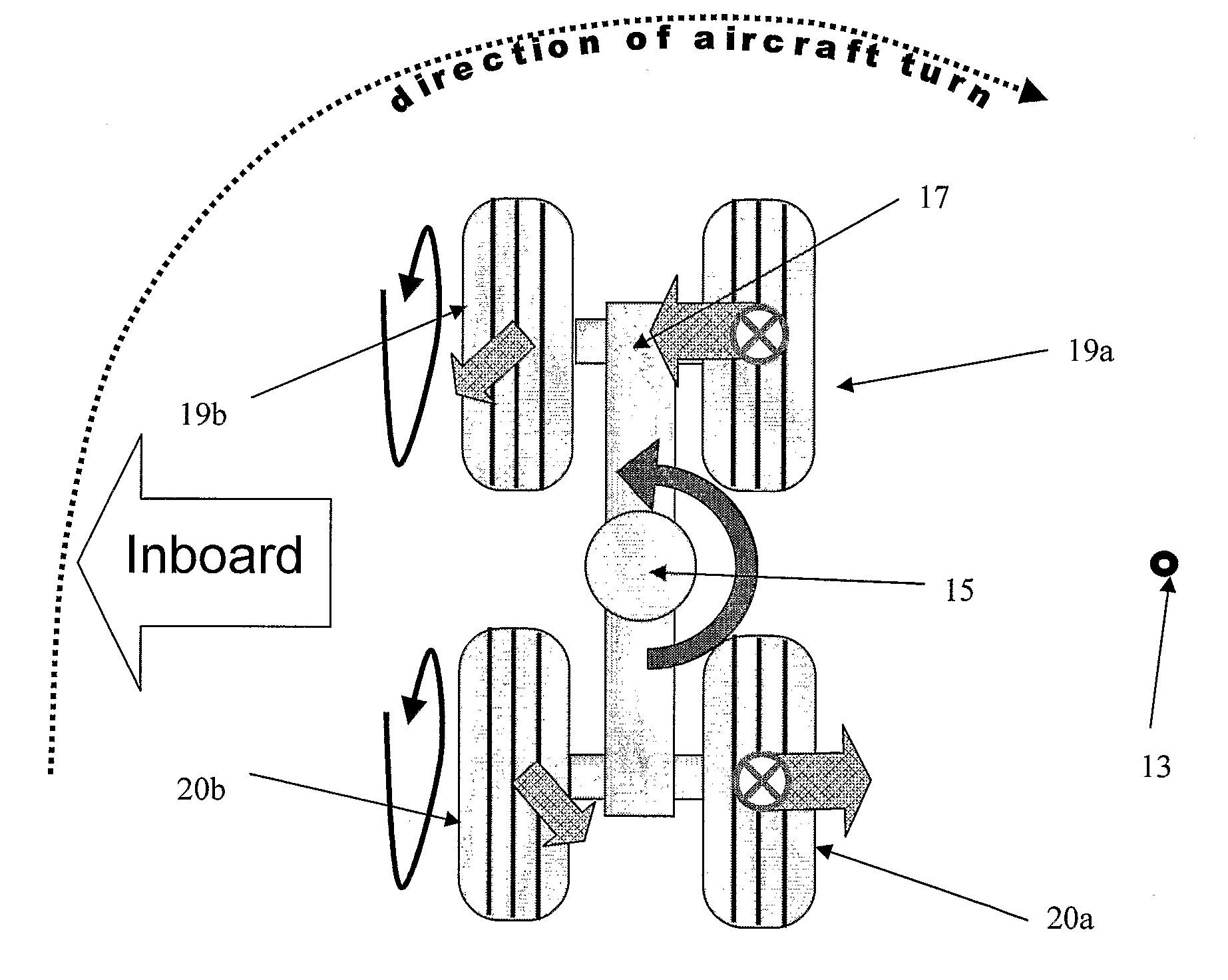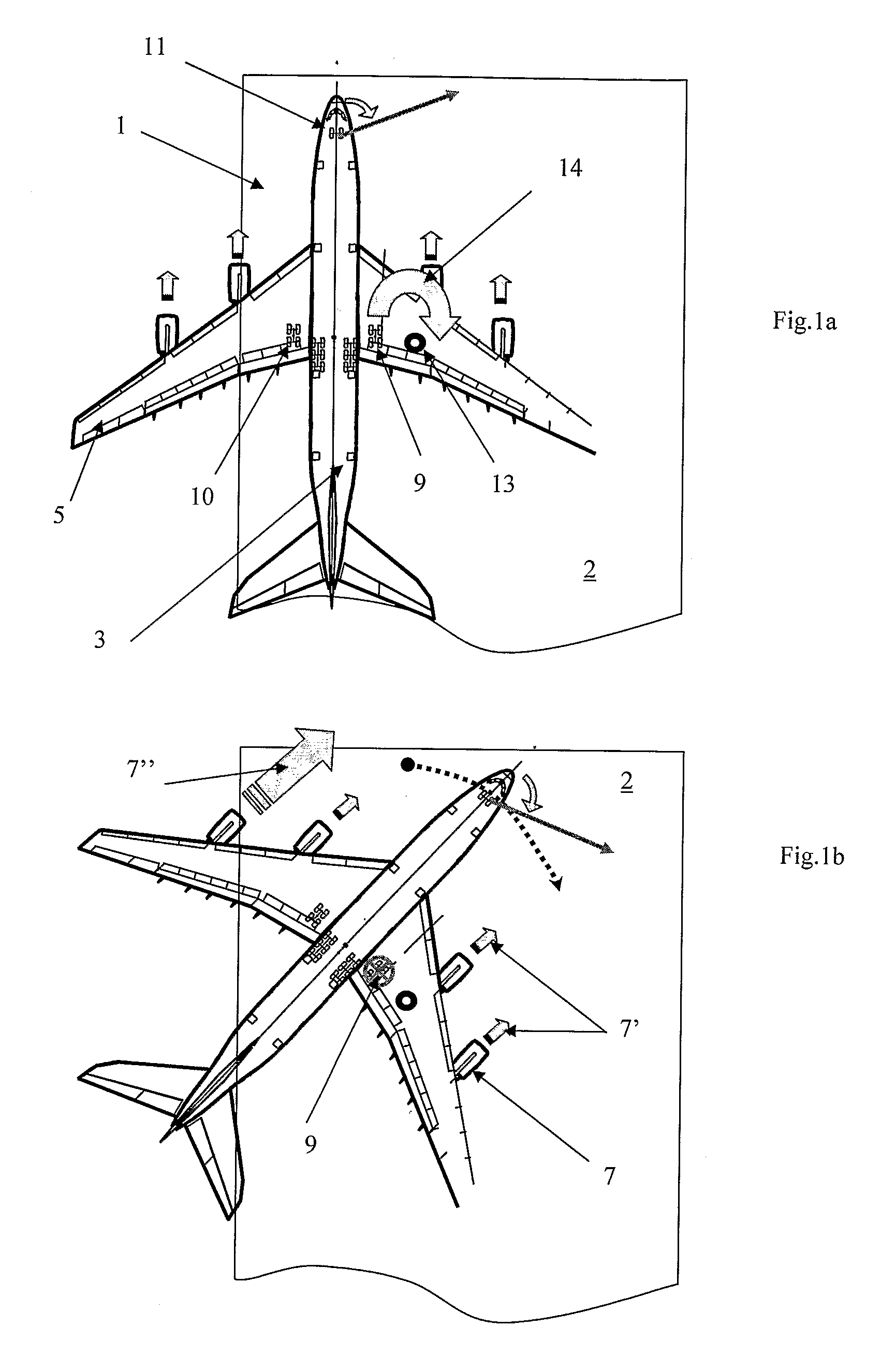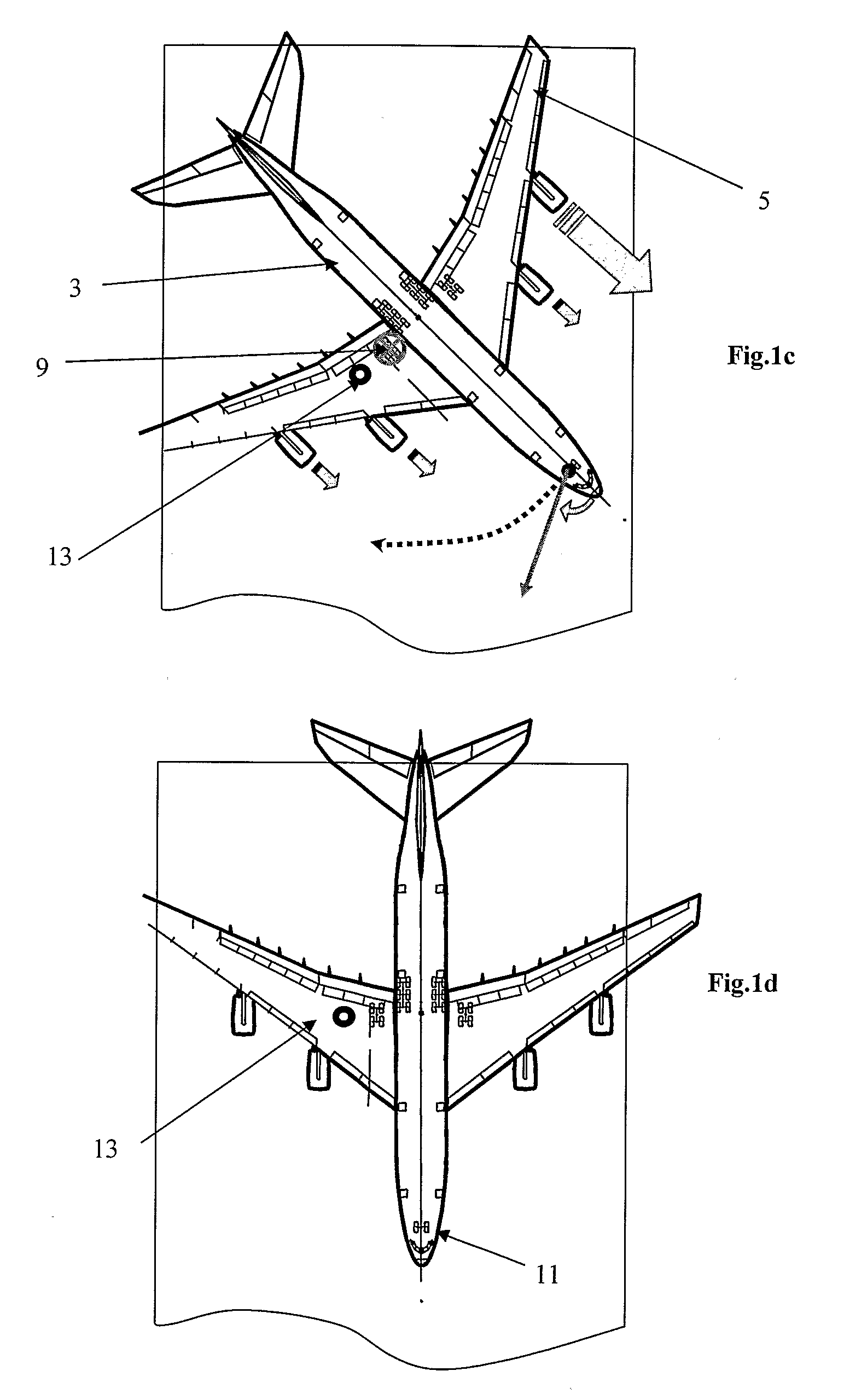Aircraft braking system
a technology of braking system and landing gear, which is applied in the field of aircraft, can solve the problem of second-to-last torque generation in the landing gear assembly, and achieve the effect of reducing the torsion load
- Summary
- Abstract
- Description
- Claims
- Application Information
AI Technical Summary
Benefits of technology
Problems solved by technology
Method used
Image
Examples
first embodiment
[0055]As is known in the art, to effect a first type of braked pivot turn the pilot performs three steps. First the nose wheel 11 is turned to one side. Then the pilot applies the brakes to the wheels of one of the landing gear 9 as indicated by the crossed-circle in FIGS. 1b and 1c. Finally a thrust is generated suitable for turning the aircraft. In the first embodiment the forward thrust 7″ of the left outermost engine is increased above idle. The net effect of the engine thrusts is a net thrust (not shown). The net thrust acts through a centre of thrust (not shown) spaced apart from the centre line of the fuselage, and close to the left-hand outermost engine.
[0056]The aircraft thus turns in a relatively small turning circle about a centre of turning 13 located close to the landing gear 9 on which brakes are applied. The landing gear travels, initially in a forward motion, in a tight circle 14 (the movement of the landing gear has been exaggerated for the sake of clarity). When th...
second embodiment
[0066]According to the invention (not shown) the aircraft is provided with a brake control system comprising a control unit, a ground speed receiver and a nose wheel angle receiver. The brake control system also comprises a brake input receiver which receives a signal when the pilot attempts to apply the brakes to the wheels of the landing gear.
[0067]The control unit is arranged to receive signals relating to the aircraft speed and the nose wheel angle via the ground speed receiver and a nose wheel angle receiver. The control unit is also arranged to compare the signal received from the ground speed receiver and the signal received from the nose wheel indicator, to parameter reference thresholds stored in a database within the brake control system. In the second embodiment, the aircraft speed is below the threshold value of 20 knots, and the nose wheel angle is greater than the threshold value of 60 degrees from the centre of the fuselage.
[0068]During use, the brake input receiver r...
PUM
 Login to View More
Login to View More Abstract
Description
Claims
Application Information
 Login to View More
Login to View More - R&D
- Intellectual Property
- Life Sciences
- Materials
- Tech Scout
- Unparalleled Data Quality
- Higher Quality Content
- 60% Fewer Hallucinations
Browse by: Latest US Patents, China's latest patents, Technical Efficacy Thesaurus, Application Domain, Technology Topic, Popular Technical Reports.
© 2025 PatSnap. All rights reserved.Legal|Privacy policy|Modern Slavery Act Transparency Statement|Sitemap|About US| Contact US: help@patsnap.com



